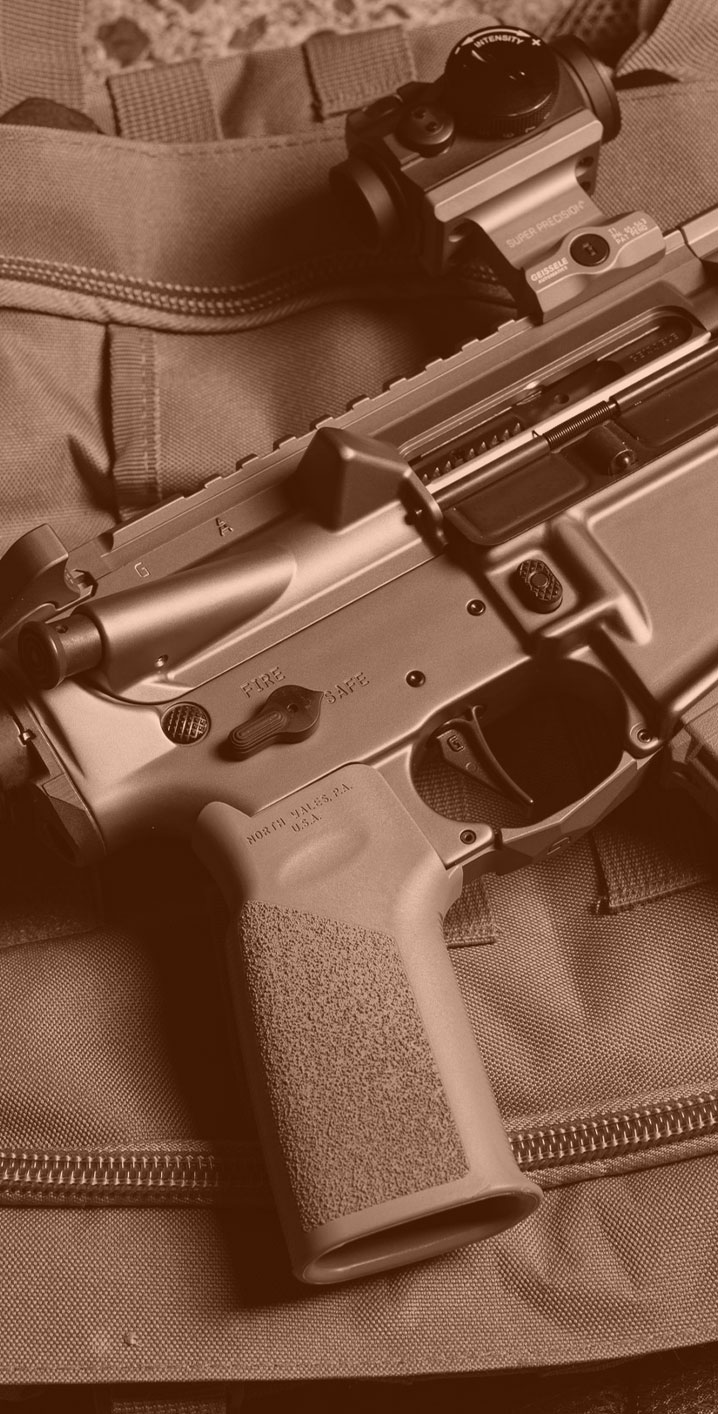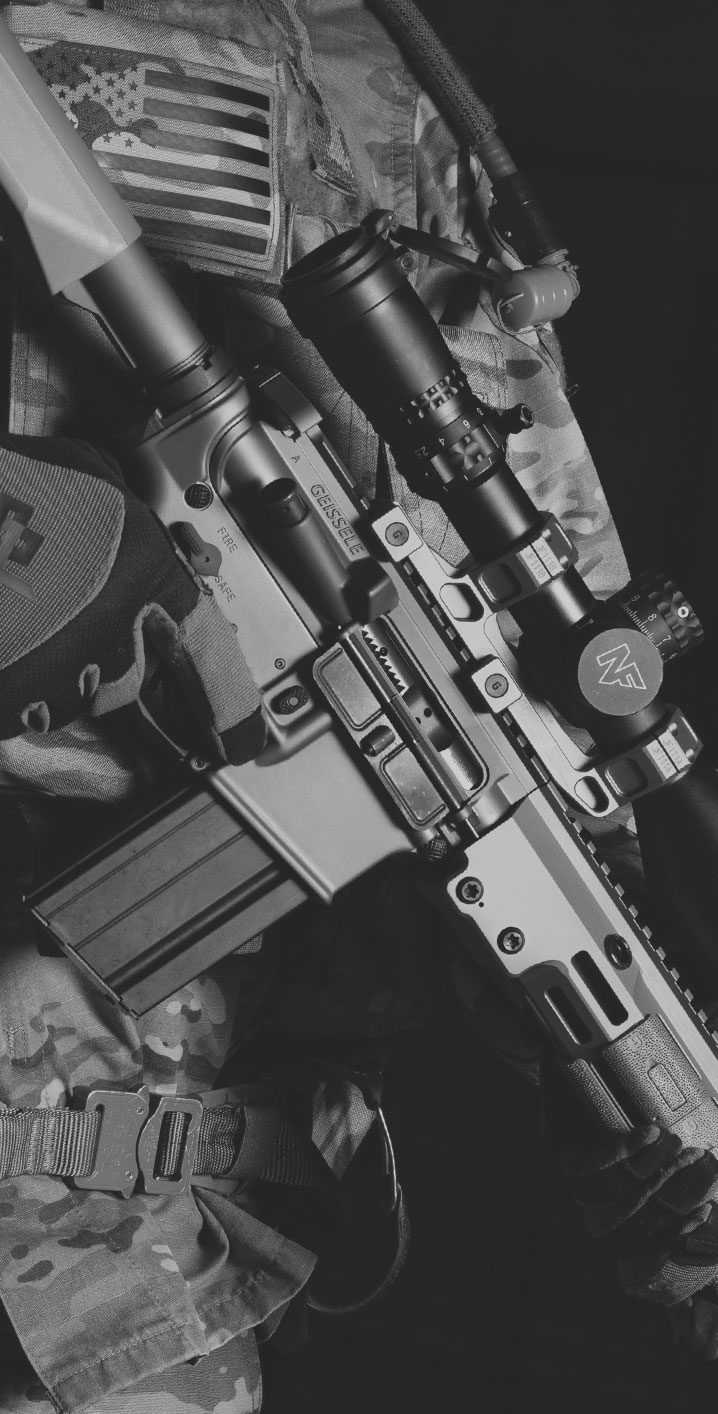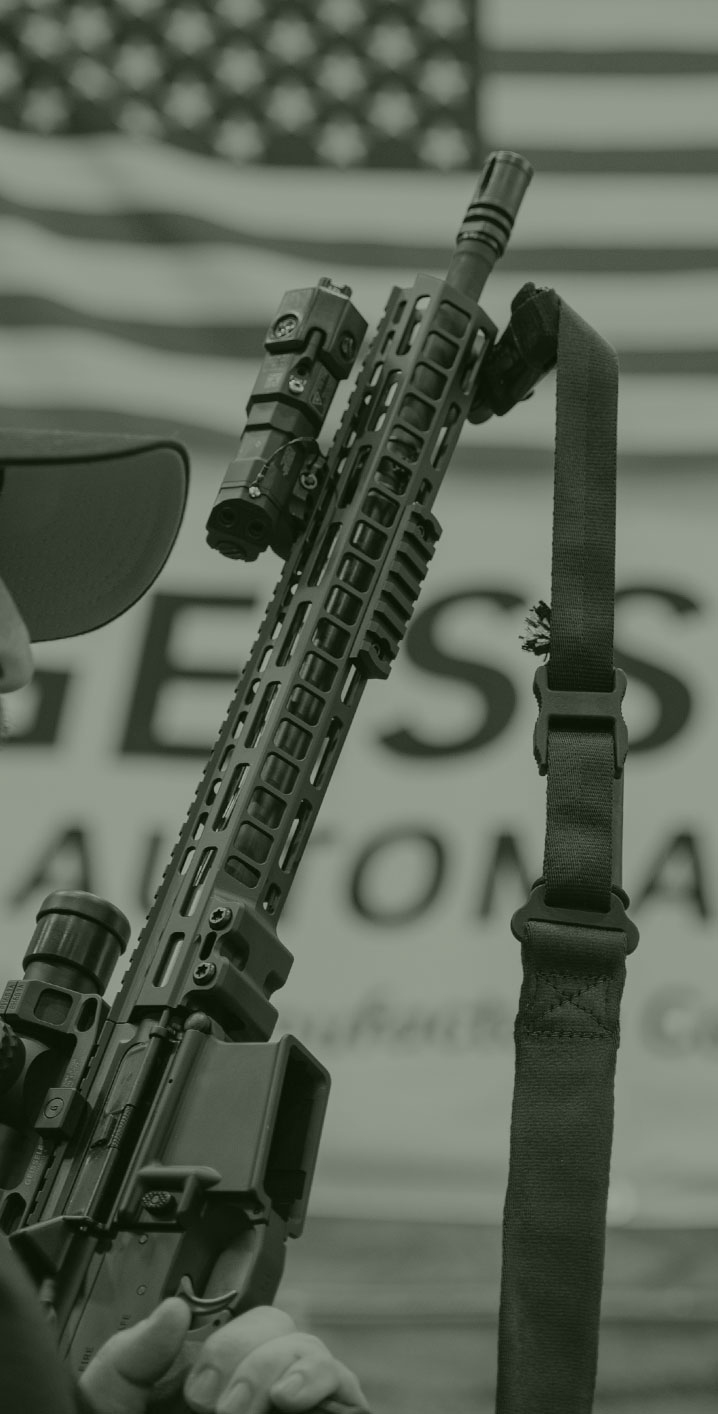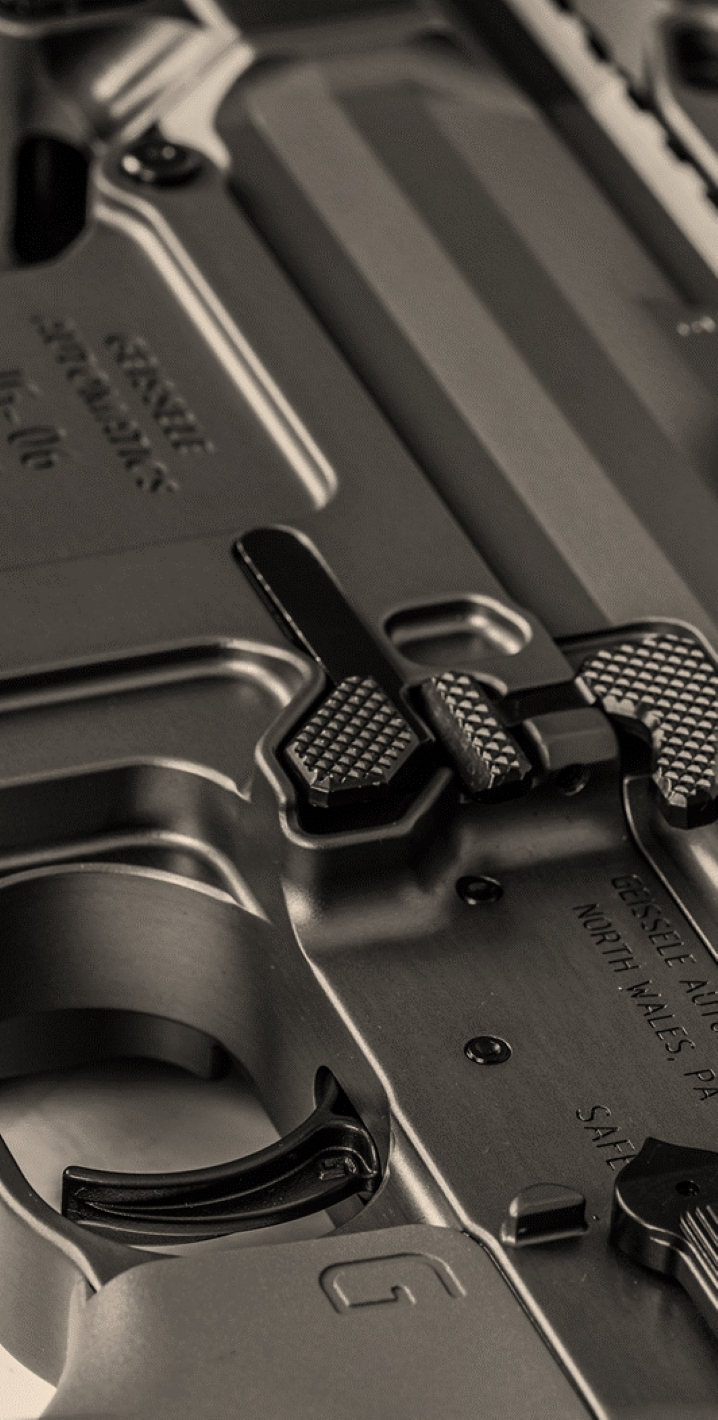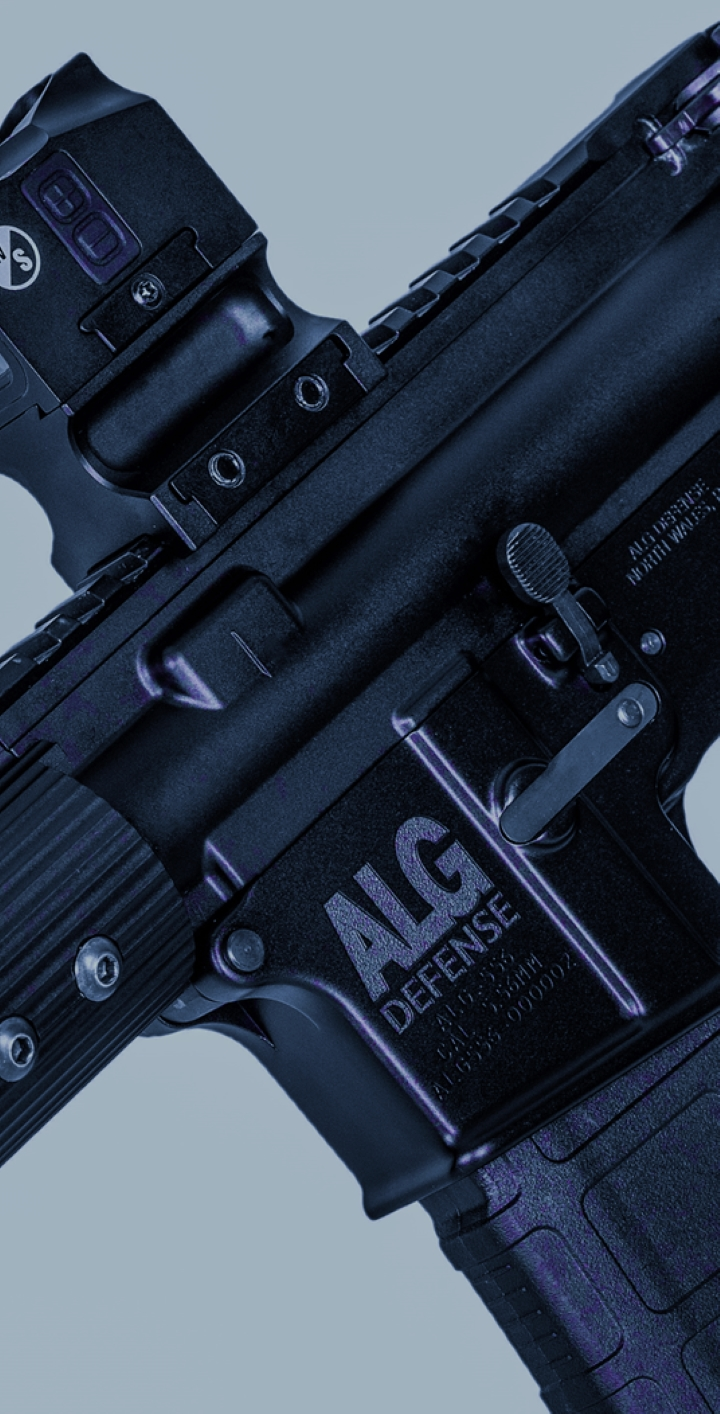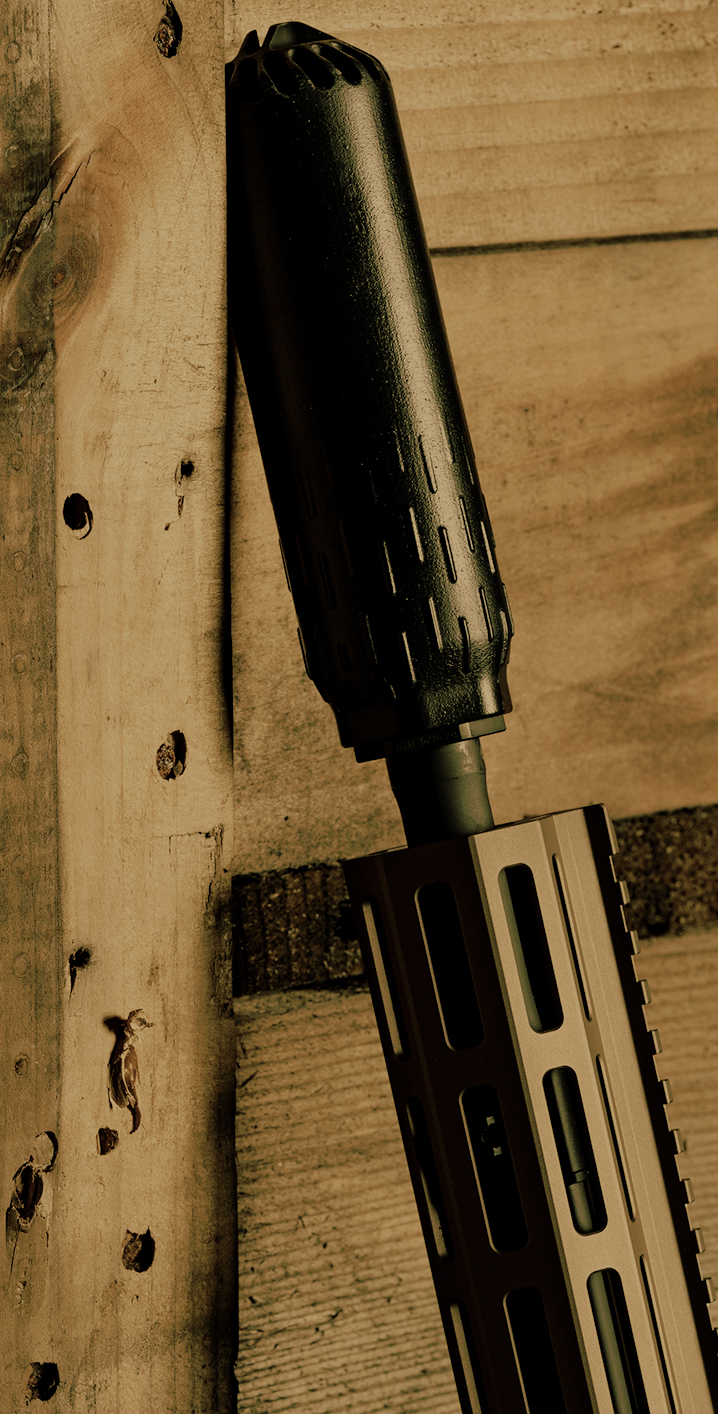Firearms
Subscribe to RSS FeedAR-15 Rifles
Whether for target practice, competition, or home defense, the AR-15 is the most popular semi-automatic rifle in the United States. Between the balance it offers and the options for customization, the AR-15 is a favorite of gun enthusiasts across the country who enjoy the thrill of the build as much as the thrill of the shot.
At Geissele Automatics, we manufacture the highest quality AR-15-style rifles and components, including upper receiver groups, lower parts, triggers, magazines, and more.
What Is An AR-15?
One of the most popular rifles across the United States, the AR-15 is a semi-automatic rifle used for a variety of applications such as target shooting and hunting, small game, and home defense.
The AR-15 gained popularity largely due to its modularity to be outfitted with different components, including grips, stocks, sights, and other accessories.
The AR-15 in standard configuration is typically capable of firing 5.56mm NATO (full pressure, used by military) or .223 Remington (lower pressure, sold commercially) cartridges. Its unique but simple design also offers enhanced ergonomics, control, and customization compared to other rifles in its class.
What Does The AR In AR-15 Stand For?
Contrary to the commandeered buzzword, “assault rifle,” the AR in AR-15 stands for “Armalite Rifle.” While it was once used to denote one specific rifle manufacturer, today, the term AR-15 is used as an all-encompassing term for semi-automatic weapons of this platform design.
Where Did The AR-15 Come From?
The AR-15 was manufactured by Armalite for civilian use in the late 1950s. While the rifle was named after the manufacturer (Armalite rifle), the company sold the design to Colt, another firearms manufacturer, in 1959.
In 1962, the United States military adopted the platform via a contract with Colt, as they wanted a standard-issue version of the rifle for U.S. soldiers in the Vietnam War. Designated the M16, the first versions were met with ammo incompatibility and quality issues that caused malfunctions in the field, resulting in the deaths of many American soldiers.
Colt made modifications afterward to the M16, and both law enforcement and civilians alike became avid enthusiasts when the manufacturer developed a semi-automatic version, once again named the AR-15.
What’s The Difference Between AR-15, AR-style, And AR-15 Style?
While AR-15 is used as an umbrella term today to denote semi-automatic firearms in this platform, the term is technically still trademarked by Colt, and the company manufactures the Colt AR-15. The accurate terminology for semi-automatic rifles from all other manufacturers is either AR-style or AR-15 style.
How Many Different Types Of AR-15 Style Rifles Exist?
The short answer is hundreds. The patent that Colt had on the AR-15 expired in 1977, which left other manufacturers free to design their own versions and styles. Today, there are estimated 500 manufacturers producing their own AR-style rifles, including models that are chambered in calibers other than the original .223/5.56 NATO.
What Are The Different Parts Of An AR-15?
The parts of an AR-15 can be grouped into two main categories: the upper receiver group and lower receiver group. These groups each contain multiple parts.
Upper Receiver Group
In addition to the upper receiver, this group contains the bolt carrier group, handguard, barrel, and charging handle, along with other components. The upper receiver group is attached to the lower receiver to form a fully functional AR-15.
The upper receiver group contains:
- Upper receiver: Contains the charging handle and bolt carrier group and attaches to the barrel and forend.
- Bolt carrier group: Contains the firing pin, cam pin, bolt, extractor, and gas key. This group is responsible for loading, firing, and ejecting rounds.
- Handguard or rail system: Protects your hands from the heat of the rifle.
- Barrel: Comes in many different lengths. Generally, a longer barrel provides more velocity, which can aid in accuracy, while a shorter one allows for better mobility.
- Charging handle: When you need to chamber a round or clear a misfeed, the charging handle pulls the bolt carrier group back, allowing you to release a faulty round and reload. On an AR-15, this part is non-reciprocating.
- Gas block and gas tube: After a round is fired, gas moves behind the bullet down the barrel, and some of it passes through the gas port (a hole drilled in the barrel), passes through the gas block, and then down the gas tube, being directed into the gas key (part of the bolt carrier group). The pressure from the gas moves the bolt carrier group rearward into the buffer tube. The spent casing is extracted from the chamber and ejected, and a new round is chambered.
- Forward assist: Pushes the bolt forward into the battery (via a ratchet system) in the event a round is not seated fully into the chamber.
- Ejection port cover: Helps prevent ingress of dirt, dust, and debris into the bolt carrier group and upper receiver when closed.
The upper receiver group, along with many other parts of the AR-15, can be customized with aftermarket parts and components.
Lower Receiver Group
In addition to the lower receiver, this group contains the trigger group, magazine release, buffer tube, safety selector, and other components.
The lower receiver group includes:
- Lower receiver: Often considered the rifle itself instead of a component, the lower receiver is heavily regulated as a firearm and contains the rifle’s serial number.
- Lower parts kit: Contains the lower parts separately to allow gun enthusiasts to build their AR-15.
- Trigger group: The components that interface with the shooter that are used to release the hammer to strike the firing pin, which discharges the firearm.
- Buffer tube/buffer: Part of the recoil system that absorbs the energy of the bolt carrier moving rearward, helping balance the force of the gas, pushing the bolt back, and pushing the bolt carrier group back into the battery.
- Buttstock: The part of the rifle that connects to the buffer tube and lower receiver extension, which also reset on your shoulder.
- Magazines: Detachable container that holds the ammunition for the AR-15. These insert into the magazine well of the lower receiver.
Like the upper, a lower receiver group can be purchased either completed (ready to assemble with an upper), or stripped, where you purchase each component separately and assemble the group on your own.
Muzzle Devices
Muzzle devices help shooters maintain control by redirecting gasses and reducing flash and/or recoil. There are three main types: muzzle brakes, flash hiders, and compensators.
- Muzzle breaks significantly reduce recoil and vent gases horizontally to give you a clear line of vision when shooting.
- Flash hiders protect you from muzzle flash — the visible flash of burning gasses exiting the muzzle that result when the rifle is fired.
- Compensators vent gases upward and out, preventing muzzle climb when the rifle is fired rapidly and in turn, helping you maintain accuracy.
Grips
A firm grip can help you improve shooting accuracy. While the standard AR-15 grip is a mil-spec A2, you can customize your AR with an upgraded pistol grip or foregrips.
- The pistol grip attaches to the lower receiver to give your trigger hand a firm handle on your AR-15 firearm.
- Foregrips can be installed either angled or vertically to give both hands a firm grip on your rifle.
What Is The Price Of An AR-15?
AR-15 rifles vary in price from around $400 to $3,000 or more, depending on the manufacturer and the configurations of the exact rifle. It’s important to note that not all AR-15 or AR-15-style rifles are made equal. The higher quality of the gun, the more expensive it will be.
What Are The Different Barrel Lengths For The AR-15?
While the 16” is the most common length for an AR-15, there are many different barrel lengths for the rifle, including (but not limited to):
- 4” — As the shortest barrel, this AR pistol is designed for easy maneuverability in tight spaces
- 7.5” and 8.5” — Because the shorter barrel on this AR causes more pressure, shooters typically choose a heavier buffer weight to help reduce the risk of cycling issues and lower recoil
- 10.3” and 11.5” — These barrels are considered short barrel rifles, designed to be compact and fire at close range
- 14.5” — The standard carbine length for the U.S. military’s M4A1 and M4 rifles, this length and anything below it requires a tax stamp as a Short Barrel Rifle or a permanent muzzle device that brings the barrel to at least 16”
- 16” — As the civilian standard, the 16” offers the advantage of higher muzzle velocity than shorter barrels, while being more compact and maneuverable than longer barrels, and is a great choice for those new to AR-15 rifles or guns in general
- 18” — One of the less popular barrel lengths for an AR-15, these are often used more for precision-based builds
- 20” 22” and 24” — The original AR-15 had a 20” barrel, and this length is still considered by many to offer the best performance for the 5.56 NATO cartridge in terms of ballistics. However, these long-barreled rifles are typically heavier and harder to maneuver.
While shorter barrel lengths are typically preferred for home defense, longer barrel lengths are used for long-distance shooting.
AR-15 Rifles at Geissele Automatics
At Geissele Automatics, we manufacture all of our AR-15-style rifles and components in-house, only from the highest quality materials. Geissele Automatics AR-15 rifles for sale include:
Frequently Asked Questions
The Geissele Super Duty AR-15 rifle is chambered in the 5.56x45mm NATO cartridge. This is by far the most popular cartridge for AR-15 rifles, as it offers low recoil, tons of versatility and wide accessibility to available ammo types ranging from inexpensive plinking ammo, match grade competition ammo, and soft point hunting ammo.
The forward assist on an AR-15 is a device that allows the shooter to close the bolt quickly if or when a cartridge does not sit correctly in the chamber. If a mis-seated round occurs without a forward assist, the bolt is held open, and the firearm is rendered inoperable until fixed. The forward assist feature is a short-term fix for the problem.
A semi-automatic weapon can fire one round for each pull of the trigger, while a fully automatic weapon can fire multiple rounds with each trigger pull. Fully automatic firearms are also regulated through the National Firearms Act (NFA).
Geissele Nanoweapon® (also known as Picatinny DSL) is a family of Durable Solid Lubricant coatings which was developed by ARDEC. It is available exclusively from Geissele Automatics. We continued the development of Picatinny DSL so that its level of corrosion, wear and abrasion resistance is currently unmatched among firearm coatings. Nanoweapon is applied at low temperatures so that the underlying metallurgy of the part is non effected by the application process. Our coating also has a surface

